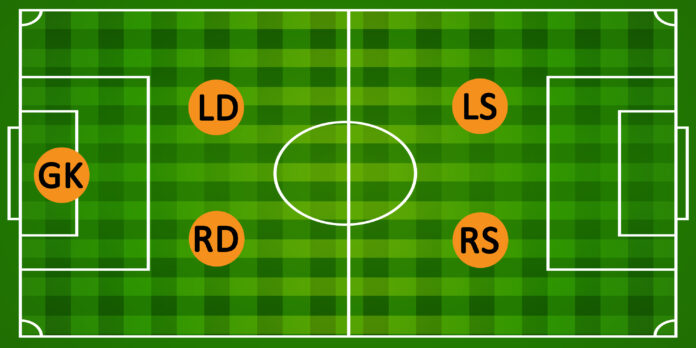5v5 soccer, often played in futsal or small outdoor matches, is ideal for younger players. It helps them develop their skills in a more accessible setting. This version of the game emphasizes quick decision-making and teamwork. It requires tight ball control. It is an excellent platform for youth development. 5v5 soccer formations let young players try different roles. This fosters a better understanding of the game and encourages versatility.
A team’s formation in 5v5 soccer can greatly affect its playing style. It must balance defense, midfield control, and attack. For younger players, these formations are more than strategies. They are tools that prepare them for complex setups in larger formats. The shift from 5v5 to 7v7 soccer is vital for a player’s growth. The skills and tactics from the smaller games become essential. This article will explore various 5v5 soccer formations. We will discuss their strengths and weaknesses. We will also cover how to adapt them for 7v7 play.
Formation 2-2
The 2-2 formation has two defenders and two forwards. It balances defense and attack. With two defenders, this formation ensures a solid defense. It also positions two forwards to keep constant pressure on the opponent’s goal. This setup enables teams to fortify their defense and capitalize on attacks.
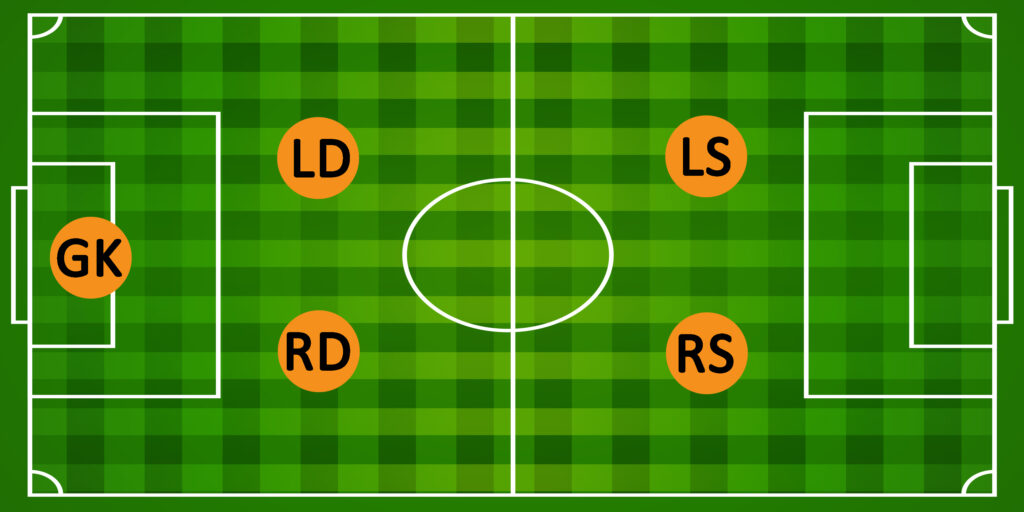
Pros:
- Provides strong defensive coverage with two dedicated defenders.
- Maintains two players up front, ensuring constant attacking pressure.
- Simple structure, making it easy for younger players to understand and execute.
Cons:
- It can leave the midfield area open, requiring defenders to step up or forwards to drop back.
- Requires good coordination between the two lines to avoid gaps in coverage.
Transition to 7v7 formation:
- Can transition into a 2-3-1 formation in 7v7 soccer.
- Can transition into a 2-2-2 formation in 7v7 soccer.
- Maintains defensive stability while expanding midfield and forward lines.
Formation 3-1
The 3-1 formation has three defenders and one forward. It is strong defensively but relies on one forward for counterattacks. This setup is ideal for teams that need a strong defense. It has three players to shield the goal. A lone forward will exploit any offensive chances. It’s a solid choice for maintaining defense while still having the scoring potential.
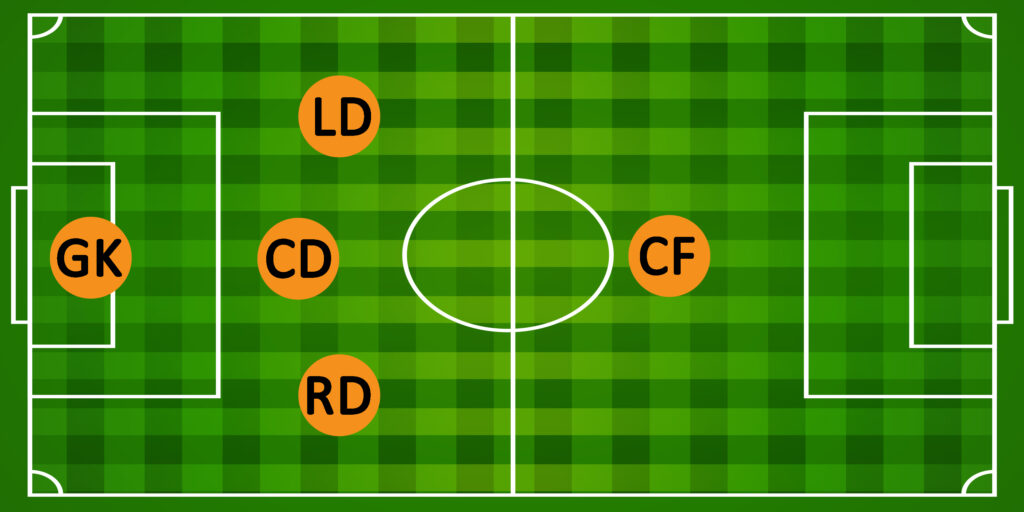
Pros:
- Provides strong defensive coverage with three defenders.
- Ideal for teams focused on maintaining a lead.
- The single attacker can apply pressure on the opposing defense and lead counterattacks.
Cons:
- The lone forward has limited support. This makes it hard to keep possession in the attacking third.
- Requires the forward to be highly effective in holding up the ball and linking the play.
Transition to 7v7 formation:
- Can transition into a 3-2-1 formation in 7v7 soccer.
- Focuses on maintaining defensive solidity while adding support in the midfield.
Formation 2-1-1
The 2-1-1 formation has two defenders, one midfielder, and one forward. It is a balanced setup that meets both defensive and offensive needs. Two defenders form a solid backline. A midfielder links play and controls the game. A forward is ready to exploit attacking chances. It ensures a balanced approach that adapts to both defense and offense.
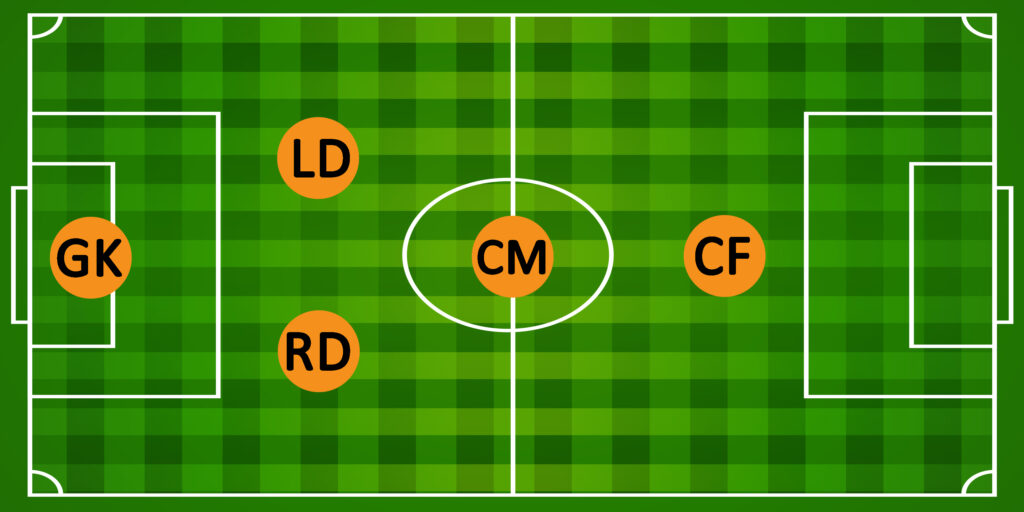
Pros:
- Provides a strong defensive core with two defenders.
- The single midfielder can link defense and attack. He can support both lines.
- The forward position ensures the effective pursuit of attacking opportunities.
Cons:
- A weak midfield may hurt our ability to control the game’s pace.
- Requires the forward to be versatile, both in attack and in pressing the opposition’s defense.
Transition to 7v7 Formation:
- Can transition into a 2-3-1 formation in 7v7 soccer.
- It adds a midfielder to support the defense and attack. This balances the team’s shape.
Formation 1-2-1
The 1-2-1 formation involves one defender, two midfielders, and one forward. This formation focuses on controlling the midfield. While maintaining a solid defense and a focal point for attack.
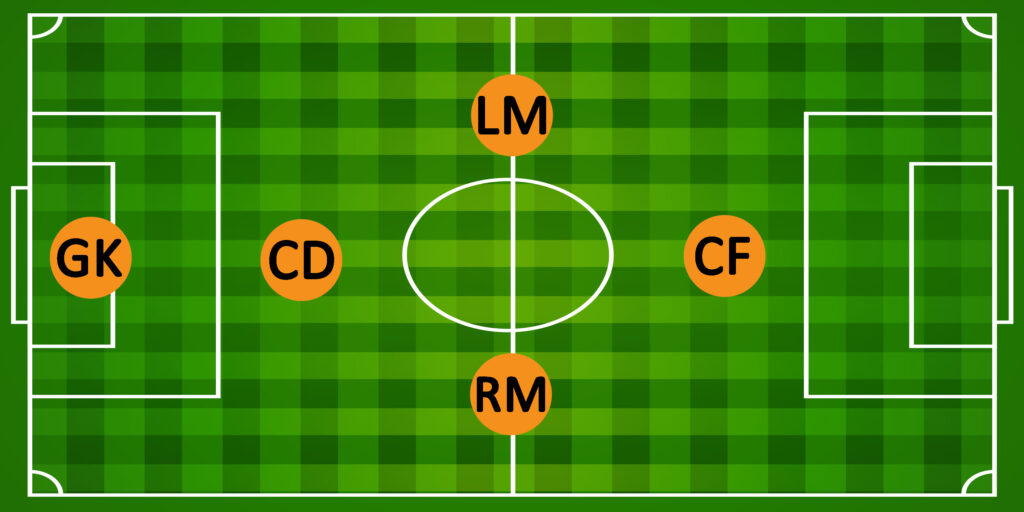
Pros:
- Strong midfield presence, with two midfielders providing support in both defense and attack.
- The single defender can still defend well. Meanwhile, the forward leads the attack.
- The formation supports fluid transitions between defensive and offensive phases.
Cons:
- With only one defender, the team may be vulnerable. Midfielders may be required to help defend against strong attacks.
- The forwards may lack support if the midfielders defend too much.
Transition to 7v7 Formation:
- Can transition into a 3-2-1 formation in 7v7 soccer.
- It adds an extra defender and midfielder. This expands and balances the lines.
Best 5v5 Soccer Formations for Different Scenarios
Choosing from the above-mentioned 5v5 soccer formations depends on the team’s needs and the game’s dynamics. Here’s a guide on how to select the best formation based on different scenarios:
When Defending a Lead:
Formation 3-1 is perfect for defense. It has three defenders for strong coverage. This formation lets one forward counterattack. It helps maintain a solid backline while focusing on preserving the lead.
When Seeking a Balanced Approach:
Formation 2-1-1 offers a good balance between defense, midfield control, and attacking opportunities. This formation provides a strong defense and a solid midfield. It’s versatile for different match situations.
When Needing to Increase Attacking Pressure:
Formation 1-2-1 or Formation 2-2 are effective for increasing offensive pressure. By focusing on the forwards, these formations create many chances to score. They also apply constant pressure on the opponent’s defense
Conclusion
5v5 soccer formations play a crucial role in shaping a team’s strategy and performance on the field. From defensive setups like the 3-1 to balanced ones like the 2-1-1, each formation has unique pros and cons. Knowing these formations helps coaches and players make better decisions. They can base them on the game’s context and their team’s needs.
For younger players, mastering these formations is key. It boosts their tactics and readies them for 7v7 soccer. The shift from 5v5 to larger formats requires adapting the small-game principles. This will improve their soccer development.







